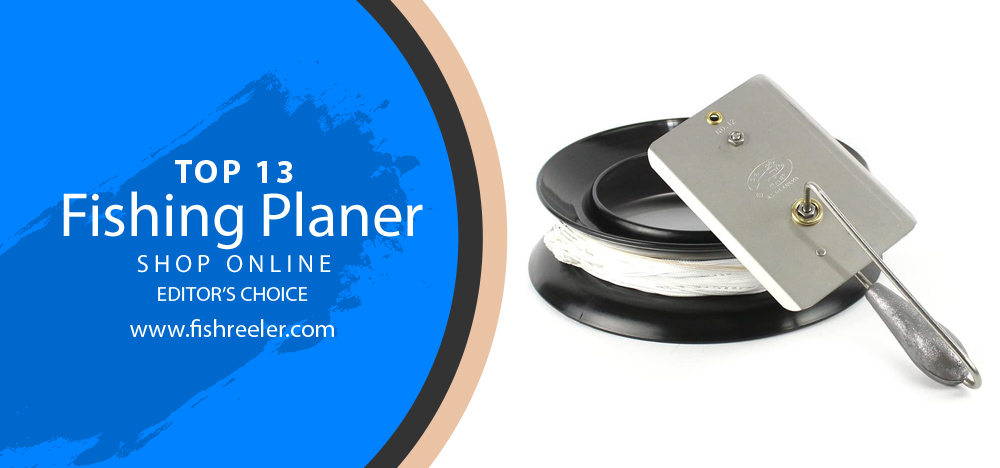
Revolutionize Your Fishing Experience with Planer Boards

Fishing is not merely a sport or a hobby; for many, it’s a way of life, a tradition passed down through generations, or a peaceful escape from the hustle and bustle of daily life. The calmness of the water, the thrill of the catch, and the joy of being in nature make fishing one of the most loved recreational and sporting activities around the world.
While fishing can be as simple as a line, a hook, and a bait, advancements in fishing technology have opened up new ways to maximize every fishing expedition. One such tool that has proven to be a game-changer for anglers is the planer board.
Planer boards are unique devices designed to optimize your fishing experience. They allow you to cover a broader area of water, fishing multiple lines simultaneously without tangling, and more importantly, they enable you to present your bait at varying depths and distances from your boat. These features significantly increase the chances of attracting and catching fish, especially in challenging conditions.
This introduction to planer boards merely scratches the surface. They have numerous other benefits, and understanding them in detail will truly revolutionize your fishing experience. As we delve deeper into this topic, we will explore what planer boards are, how they function, their benefits, and practical tips to maximize their use in your next fishing expedition. So, let’s cast our lines and embark on this exciting journey.
The 13 Best Fishing Planer: The Unseen Hero of Fishing Expeditions
Thanks to the invention of the fishing planer, fishermen were able to increase the feeding area of baits several times and got a wide field for experiments. In this article, we will talk with you about what fishing planer boards are and how they work. Stay with me not to miss the chance to find out more about this and find the perfect fishing planer for yourself.
I myself often encounter such a problem that I can’t choose one of the huge offers on the market. Therefore, I myself began to test the products that interest me and tell you about it. This time I was attracted to a fishing planer and I could not pass by. Now you don’t need to spend hours in online stores and read reviews. I did it for you and selected 13 of the best planer boards for fishing.
1# Sea Striker SSP1 Planer – Amazon’s Choice
In my opinion, this planer deserves the first place on this list. This is in great demand among fishermen who are keen on trolling fishing. It not only has a reasonable price but also is of high quality. This equipment is able to lower your bait to a sufficiently large depth. It is at an angle of 45 degrees. You will see a planer on the surface of the water as soon as the fish is on your hook. This is a compact device measuring 10 inches. It is made of stainless steel and is therefore great for long-term use in water. Such material resists corrosion and rust.
2# Krazywolf Planer Board – Amazon’s Choice
This is an ideal planer in the shape of a boat that has excellent buoyancy. You will get a pair. Namely the left and right sides. Also available in a choice of two sizes 8 and 10 inches. In addition to the excellent price, the planer is distinguished by its durability and high efficiency. You can use this equipment with any type of fishing line. It comes with warning flags, clamps, a wrench, springs, and keel weight.
3# Old Salty 4 Planer – Amazon’s Choice
This is one of the highest quality fishing planer boards you can find on the market today. You can immerse it to a sufficiently large depth due to its size. This will surely return to the surface after a bite by a fish. Stainless steel ensures the durability of use.
4# Sea Striker SSP3 Planer
This is fishing equipment that every fisherman needs who is keen on trolling fishing needs. After using it, you will notice how the effectiveness of your fishing has increased. It allows you to immerse your bait to great depths. You do not need to use a heavy sinker. Don’t be afraid to use it in seawater. The planer is made of durable materials such as metal and stainless steel.
5# Sea Striker SSP2 Planer
It does not matter whether you are a beginner or already a professional, this is a necessary accessory during your fishing. You will increase your chances of a great catch. Just lower the planer to the depth you need and when the fish is on the hook, the equipment will return back to the surface.
6# Sea Strike SSP3BLK Planer
This works great while lowering your bait to a depth. The manufacturer offers you a durable fishing device at an affordable price knowing that trolling fishing is an expensive pleasure. It comes in one size and has a dark color. Blades are made of stainless steel. It will move at an angle of 45 degrees.
7# The Tackle Room Planer Bridle Kit
You will get not just a fishing planer, but also a planer bridle, a planer bridle rigging kit, and a 100′ of 150′ Momoi leader. This is the necessary equipment for high-quality trolling fishing. You need this kit if you are looking for an easy way to place your bait at the desired depth.
8# Sea Striker HS8-KIT High-Speed Planer Kit
Enjoy trolling fishing with optional fishing equipment such as a planer. It allows you to fish your fishing at 18 mph. Attach the sea striker planer to the terminal and this will move in its own line. The advantage of this equipment is that you do not need to get it every time. And this fishing device allows you to fight the fish to the end on your own.
9# Clarkspoon Planer Kit with Leader & Leader Storage & Spoon
This kit is what you need to immediately start fishing. This is especially suitable for coastal trolling. You will receive a planer and a spoon. It comes in silver color and is ideal for saltwater. Enjoy fishing with this fishing kit!
10# Old Salty 8P High-Speed Planer
This planer is known by many anglers who know a lot about fishing equipment. This is suitable for both beginners and advanced fishermen. This does a great job of lowering your bait as deep as possible. And you will appreciate its price for such high quality.
11# The Tackle Room Handline Planer Kit
Give yourself the opportunity to lower your bait to a great depth in the sea. Durable material guarantees you the durability of using this product. To increase the shelf life, it is advisable to rinse the planer under running water after use in saltwater. In addition, you will get a nylon rope in the kit.
12# Clarkspoon CP1 HD Diving Planer Fishing Line
This is another piece of equipment that deserves your attention. It is made in silver and comes in size 1. It is lightweight and does not take up much space in your bag. It lowers the bait to an excellent depth and returns back after a fish bite.
13# Old Salty 2 Planer
A knowledgeable fisherman will definitely be happy to get such a planer board. The excellent quality and high efficiency of this equipment showed many fishermen what the ideal trolling fishing is. This will last you for many years thanks to the stainless material.
The Unsung Heroes of Angling: Unveiling Planer Boards
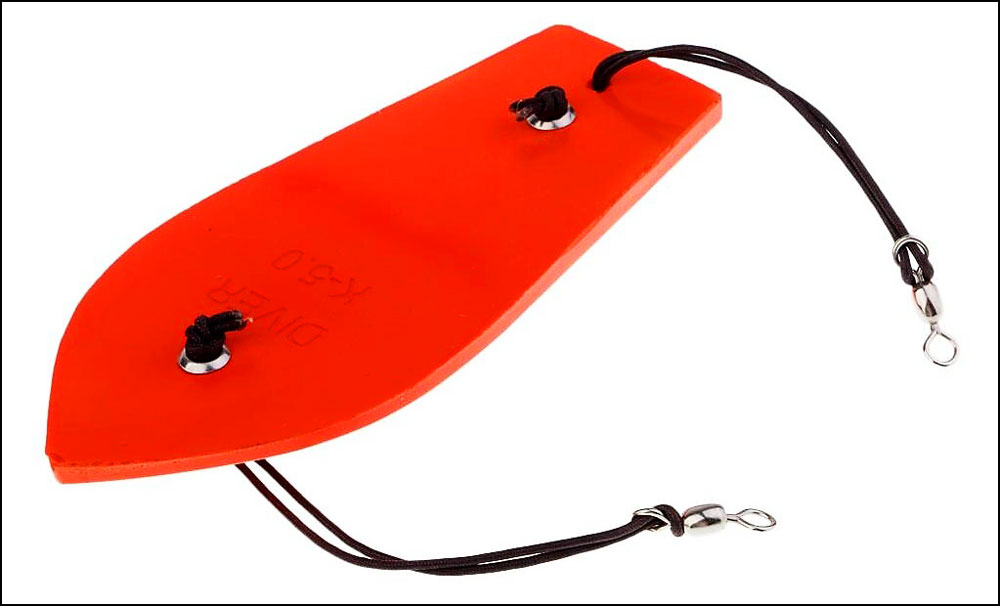
Planer boards are ingenious devices that have transformed the face of trolling in fishing. Essentially, they are designed to help fishermen cover a wider span of water and efficiently present lures at varying distances and depths, a feat that’s not easily achieved with a fishing rod alone.
At first glance, a planer board might appear somewhat peculiar. It’s typically a flat, buoyant device, often rectangular or somewhat bird-shaped, made from either wood or plastic. Its size and shape allow it to float on the water and resist being pulled underwater by the fishing line. A planer board consists of several key components: the board itself, which floats on the water; a mast or clip system to attach the fishing line; and often, a flag or similar device to signal a catch.
The fishing line is connected to the planer board using release clips, which allow the line to be detached when a fish is hooked. Once your fishing line is attached to the planer board, the board is then set adrift from the side of the boat. The board “planes” out away from the boat, taking the fishing line and the bait with it. This setup allows multiple lines to be fished simultaneously from a single boat without the lines tangling, covering a larger area of water and increasing the chances of a successful catch.
The use of planer boards in fishing isn’t a modern concept. They have been used for centuries by various cultures worldwide, albeit in simpler forms. The contemporary version of planer boards, as we know them today, emerged in the mid-20th century and has seen constant improvements and variations to suit different fishing conditions and species. Planer boards have truly stood the test of time, proving their worth in both recreational and commercial fishing.
Understanding the concept of planer boards is the first step towards revolutionizing your fishing experience. As we move forward, we’ll explore the fascinating mechanics of these devices, their undeniable benefits, and practical tips for their usage. So, stay hooked as we continue this exciting exploration!
Rigging it Right: Understanding the Mechanics of Planer Boards
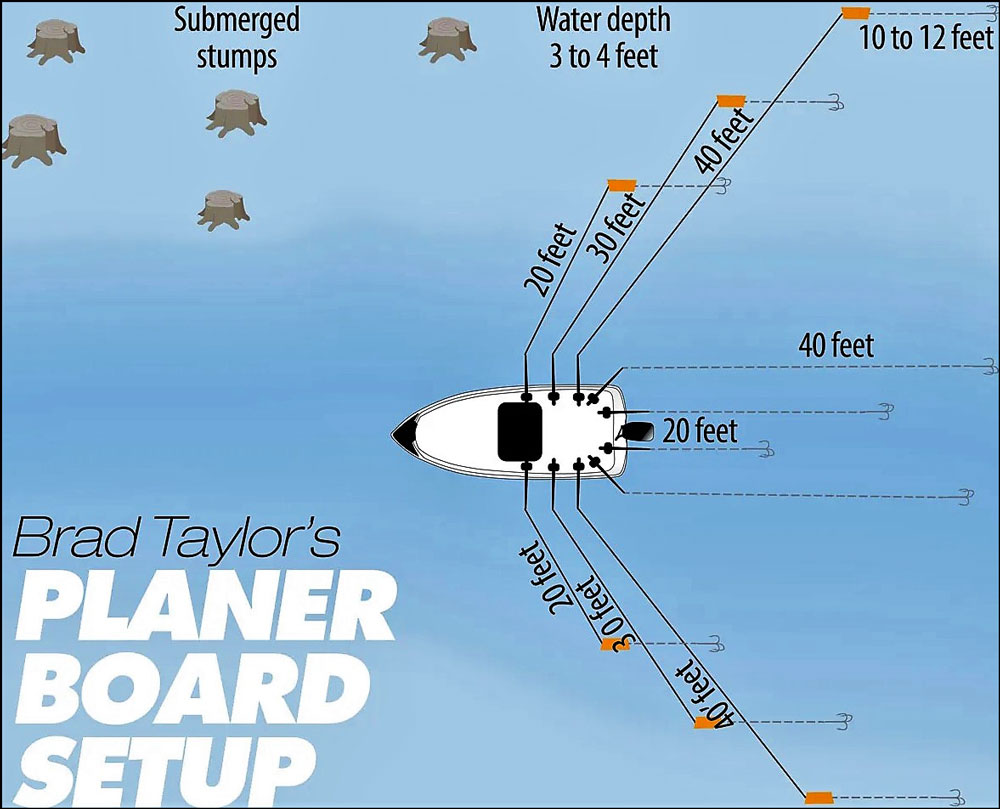
Planer boards are not just simple floating devices; they are engineered to perform a specific function – to take your bait and line away from your boat into promising waters where fish are more likely to bite. But how do they accomplish this task? Let’s delve into the mechanics of planer boards.
A planer board works on a simple principle: resistance. When set in water, the forward movement of the boat and the shape of the planer board make it move away from the boat, creating resistance against the pull of the fishing line. This resistance allows the board to “plane” out to the side, effectively carrying the line and the bait with it. As the boat moves, the planer board drags the fishing line through the water at a set distance and depth, covering a wider area than a line cast straight from the boat.
Setting up a planer board is a relatively straightforward process. First, you cast your baited line into the water. Then, you attach the line to the planer board using the provided release clip. The board is then placed in the water and allowed to drift away from the boat as it moves forward. The line’s tension keeps the board in place, allowing it to skim across the water’s surface. Once a fish strikes, the line is released from the board, allowing you to reel in your catch directly.
When it comes to the type of fishing lines and rods suitable for use with planer boards, it largely depends on the conditions and the species you’re targeting. Generally, heavier and longer rods are preferred as they can better handle the pressure exerted by the planer board and a hooked fish. In terms of fishing lines, braided lines are often favored due to their strength and thin diameter, which causes less drag in the water. However, monofilament lines can also be used effectively with planer boards. It’s important to remember that the fishing environment, target species, and personal preference play significant roles in choosing the right equipment.
Now that we have a firm grasp of the mechanics of planer boards, let’s sail ahead to discover their incredible benefits and how they can turn an ordinary fishing trip into an extraordinary angling adventure.
Casting Deeper, Catching More: The Unrivalled Benefits of Planer Boards
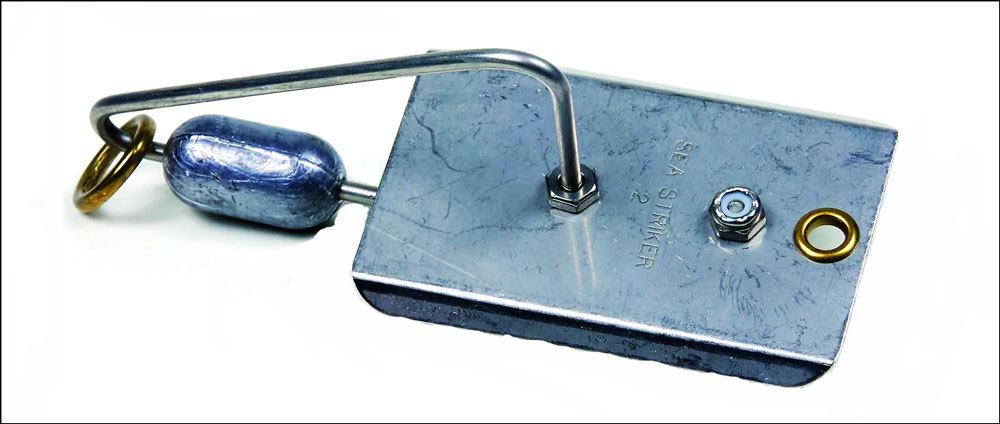
Planer boards are not just tools; they are strategic devices that offer several tangible benefits to anglers. Whether you’re a weekend warrior seeking to maximize your catch or a seasoned professional angler striving for the next trophy fish, planer boards can significantly enhance your fishing experience.
One of the key advantages of using planer boards is the increased odds of catching fish. By design, planer boards allow you to cover a larger expanse of water, significantly increasing your bait’s visibility to fish. The planer board takes your line away from the boat’s disturbance, making your bait appear more natural and enticing to fish. This allows you to present multiple baited lines simultaneously, each at different distances from the boat, which undeniably increases the likelihood of a successful catch.
Moreover, planer boards add a whole new dimension to your fishing—depth. By adjusting the amount of line between the planer board and the bait, you can control the depth at which your bait is presented. This is particularly useful when fish are located at specific depths due to water temperature, light, or feeding patterns. Whether you’re aiming for fish that are suspended mid-water or lurking near the bottom, planer boards offer unparalleled control over your bait’s depth.
Lastly, planer boards are incredibly versatile, enabling fishing in various water conditions. They can be effectively used in shallow waters where a boat might spook fish or in deep waters where certain species reside. They’re also useful in choppy conditions, where the movement of the board can add extra action to the bait, making it more attractive to predatory fish.
In summary, planer boards are essential tools that can drastically improve your fishing efficiency and success rate. They offer a strategic advantage by allowing you to present your bait more effectively and naturally. As we move on to explore the different types of planer boards and practical tips for their use, you’ll see that the benefits of using these devices are not just theoretical but proven in practice. Stay tuned as we continue to dive deeper into the world of planer board fishing.
Choosing Your Weapon: Navigating the Variety of Planer Boards
As with any fishing equipment, not all planer boards are created equal. There are several different types available on the market, each designed to cater to specific fishing conditions and target species. Understanding the differences between these types and their best use cases is crucial in selecting the right planer board for your needs.
🎡Inline Planer Boards: These are small, lightweight, and easy to use, making them perfect for beginners or casual anglers. They attach directly to the fishing line and are excellent for lighter tackle and smaller game fish. However, they might not perform as well in rougher water conditions or with heavy tackle due to their size and weight.
🔆Dual-Board or Mast System Planer Boards: These are larger and more complex, consisting of two boards connected by a heavy line, usually mounted to a mast on the boat. They’re ideal for professional anglers or those targeting larger species, as they can handle heavy tackle and rough water conditions. These boards are designed to carry multiple lines at varying distances and depths, making them highly effective but also more challenging to use.
🎆Ski-Style Planer Boards: These planer boards are designed with a unique ski-like bottom, allowing them to perform exceptionally well in rough water conditions. They maintain stability and direction even in choppy waters, making them a favorite among anglers fishing in varying weather conditions.
Choosing the right planer board boils down to your specific fishing needs. Consider factors such as the species you’re targeting, the tackle you’re using, the water and weather conditions, and your skill level. If you’re a beginner or fishing in calm water conditions for smaller species, an inline planer board may be ideal. However, if you’re an experienced angler targeting larger species in rough water conditions, a dual-board or ski-style planer board might be more suitable.
There are planers, which are also called boats or mini-planer. An independent boat is a conventional design equipped with a bright flag. After biting or hooking, the fishing line is released from the device, and the boat goes into free navigation. Therefore, after landing, the fisherman must go in search of his assistant. There are also fishing planers, which can consist of 2-3 blades equipped with floats, or have a wide base with a loaded keel. On such a device snap-ins from several spinning rods easily fit. The planer is mounted on a separate cord, which is attached to the mast or rack with a reel. Usually, two devices are used (from both sides) for the stability of the boat.
Remember, the right planer board is the one that best complements your fishing style and enhances your overall fishing experience. In the next section, we will share practical tips and tricks on using planer boards effectively, helping you make the most of these wonderful fishing tools. Stay tuned as our deep dive into the world of planer board fishing continues!
How to Use Planer Boards to Catch More Fish
Planer boards are an ingenious tool in the angler’s arsenal, providing the ability to cover more water and target fish more effectively. However, to truly maximize their potential, it’s important to understand how to use them properly. Here’s a step-by-step guide on how to use planer boards to catch more fish:
Select the Right Planer Board
First, choose the right planer board for your needs. Inline boards are great for lighter tackle and smaller boats, while dual-board systems are ideal for larger boats and heavier tackle. Consider the species of fish you’re targeting and the water conditions to make the right choice.
Rig Your Line
Rig your line as you normally would, with your bait or lure at the end. The distance between your bait and the board can vary, but a good starting point is about 20-50 feet.
Attach the Planer Board
Clip the planer board onto your line. For an inline board, you’ll typically have two clips: one at the front and one at the back. Open the clip, insert the line, and close the clip. Make sure it’s attached securely.
Set the Planer Board
Release the planer board into the water, allowing it to take the line out to the side of the boat. The board should be at a right angle to the boat, effectively spreading your lines out over a wider area.
Monitor the Planer Board
Keep an eye on your planer board for any signs of fish activity. If a fish strikes, the board will usually dip or fall back. Some boards are designed to release the line when a fish hits, allowing you to fight the fish directly on your line.
Reel in the Fish
Once you’ve got a fish on, reel in your line. With inline boards, you’ll usually bring in the board and the fish at the same time. For a dual-board system, you can often unclip the line and fight the fish directly.
Tips for Success
- Experiment with Depth: Use planer boards in conjunction with a variety of weights, divers, or downriggers to present baits at different depths and find where the fish are feeding.
- Vary Your Speed: Different species and conditions may require different trolling speeds. Don’t be afraid to vary your speed until you find what works.
- Use Multiple Boards: If regulations allow, using multiple boards can significantly increase your spread and chances of attracting fish.
Planer boards may seem intimidating at first, but with a little practice, they can become an invaluable part of your fishing technique. By strategically using planer boards, you can greatly increase your chances of a successful day on the water. So get out there, cast wide, and reel in those fish!
Mastering the Tides: Practical Tips for Using Planer Boards

While understanding the mechanics and benefits of planer boards is vital, applying this knowledge practically can often be challenging. Therefore, let’s explore some tips and advice that will help you set up and use planer boards efficiently.
| Aspect | Explanation |
|---|---|
| Setting Up | When attaching your line to the planer board, ensure it’s secured properly. The line shouldn’t be too loose, or the board might slip. On the other hand, if the line is too tight, it might not release when a fish strikes. Practicing the right tension for your specific board and conditions is essential. |
| Spacing | If you’re using multiple planer boards, ensure they are adequately spaced to prevent tangling. It’s a good strategy to start setting up the furthest lines first and then add closer lines. This approach helps avoid crossing lines and potential mess. |
| Reading the Board | Paying attention to the movement of your planer board is crucial. If the board starts to fall back, it might indicate a fish is on the line. If the board veers off course, it could be snagged on weeds or debris. Understanding these signals will help you respond appropriately and increase your chances of a good catch. |
Troubleshooting common issues is part of the planer board fishing experience. For instance, if your board isn’t tracking correctly, check the tension on your line and adjust as needed. If it’s not staying upright, it might be due to heavy current or wind, requiring a larger board or additional weight.
Safety should always be a priority when using planer boards. Be aware of your surroundings, especially when running multiple lines. Keep a safe distance from other boats to avoid tangling lines. Always wear a personal flotation device when setting and retrieving planer boards, especially in rough conditions.
Finally, remember that practice makes perfect. Experiment with different setups, baits, and techniques until you find what works best for you. Don’t be discouraged by initial challenges; with time and experience, you’ll become a proficient planer board angler.
In our next section, we will share some real-life experiences and case studies involving the use of planer boards. These stories will provide further insights into the transformative potential of planer boards in fishing. So, stay with us as we continue our journey into the captivating world of planer board fishing.
Reel-life Stories: Personal Encounters with Planer Boards

Hearing from real anglers can often provide the most profound insights into the effectiveness of planer boards. These personal experiences, successes, and even failures serve as valuable lessons and motivators for all of us in the fishing community.
Take, for instance, the story of Sam, a seasoned angler who had always relied on traditional casting methods. Despite being an experienced fisherman, Sam often found it challenging to catch walleye in his local lake due to the boat traffic and their tendency to swim away from the boat’s disturbance. After being introduced to planer boards, Sam’s fishing experience was transformed. The planer boards allowed him to position his bait away from the boat’s path, significantly increasing his catches. He is now a firm advocate for planer boards and never ventures out on a fishing trip without them.
Then there’s the case of the Carlson family. They love spending their summer weekends trolling for salmon in the Pacific Northwest. However, fishing as a family often resulted in tangled lines and less-than-optimal results. After incorporating planer boards into their setup, they could comfortably fish multiple lines without worrying about tangles. Their catches increased, and so did their enjoyment of family fishing trips.
These stories are just a few examples of how planer boards can enhance one’s fishing experience. Whether you’re a professional angler or a weekend hobbyist, the use of planer boards can be a game-changer, providing increased coverage, better bait presentation, and ultimately, more successful catches.
We would love to hear more experiences and stories from our readers. If you’ve used planer boards in your fishing adventures, please share your experiences in the comments section. Your insights could help another angler improve their fishing game.
As we wrap up this comprehensive guide on planer boards, we hope you’re feeling inspired and equipped to incorporate these ingenious devices into your own fishing toolkit. So, gear up, set sail, and let the planer boards guide your baits into promising waters!
FAQ: A New Angle on Angling
Casting Off: The Revolutionary Impact of Planer Boards on Fishing
As we reel in our exploration of planer boards, it’s essential to reflect on the key points we’ve discussed. Planer boards, with their intriguing mechanics and versatility, have revolutionized the fishing landscape. These devices offer a strategic advantage to anglers by allowing them to present their bait more effectively and naturally, increasing the likelihood of a successful catch.
We’ve delved into the different types of planer boards available in the market, each suited to particular fishing conditions and species. We highlighted the importance of choosing a planer board that aligns with your fishing style and needs, be it the straightforward inline board or the more robust dual-board system.
Through practical tips and troubleshooting advice, we provided a roadmap for using planer boards effectively. We emphasized the importance of proper setup, reading the board’s behavior, and maintaining safety precautions.
And finally, through shared experiences and anecdotes, we’ve seen the transformative impact planer boards can have on fishing trips. From seasoned anglers to family fishing outings, the use of planer boards has proven to be a game-changer in numerous scenarios.
In conclusion, planer boards are more than just fishing tools—they’re strategic devices that can significantly enhance your fishing experience. Whether you’re an amateur hobbyist or a professional angler, incorporating planer boards into your fishing arsenal can unlock new possibilities and adventures on the water.
As you cast your line into the vast expanse of water, let the planer board guide your bait into promising depths, and who knows, your next big catch might just be a tug away!
Tags: #planer boards fishing / #planer board fishing / #fishing planer boards / #fishing planer / #best planer boards for striper fishing / #best planer boards walleye fishing / #best planer boards for fishing

I live in Tenerife (Canary Islands) for the last 10+ years and share my daily fishing experiences on my website. Many years of personal experience as a fisherman and the vast experience of my friends allow me to write professionally on any fishing topics (from choosing a flashlight and equipment to deep-sea fishing).
All of my advice is based on practical real-world experience and will be useful to both novice anglers and professionals. Read more about the author.
Affiliate Disclosure: FishReeler.org sometimes gets paid for listings, through sponsors or affiliate programs like Amazon, Ebay, Cabelas, Bass Pro Shop, Shimano, Daiwa, Rapala, Renn, Okuma, KastKing, etс. Clicking a link helps keep FishReeler.org free, at no extra cost to you!
About the author: Each article is verified by the fishing expert Sergio Smirnoff. The articles are written by professional and amateur fishermen with 20+ years of fishing experience.
Note: The views and opinions expressed in this article are those of the authors and do not necessarily reflect the official policy or position of any agency. The articles are for informational purposes only, share your opinions in the comments and join the fishing discussions, let's share our fishing experiences together!


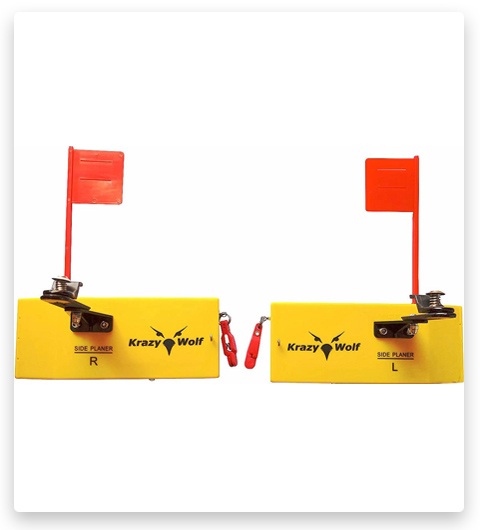

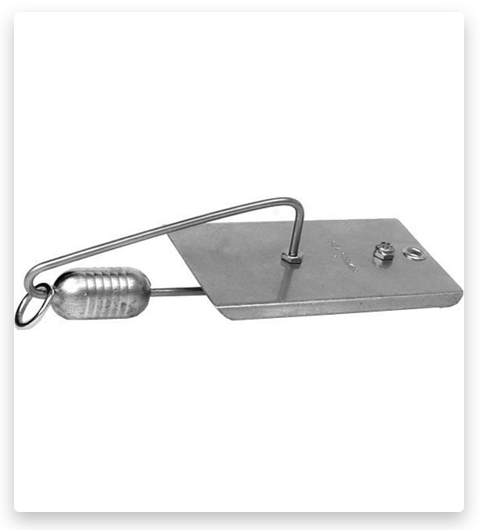
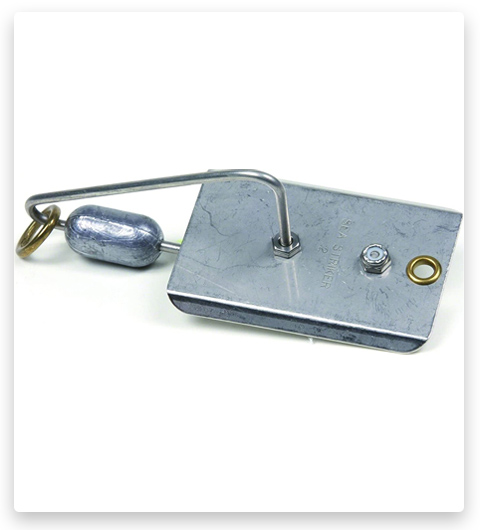
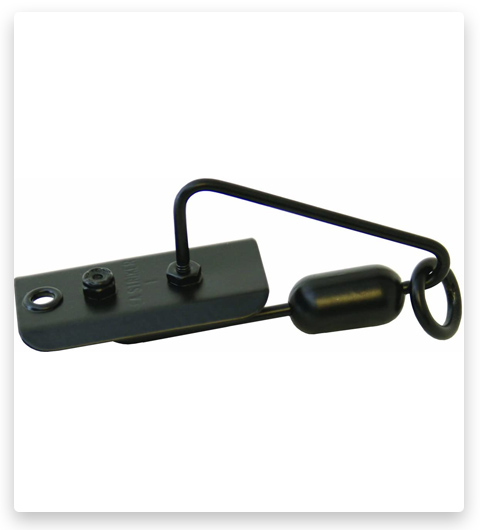
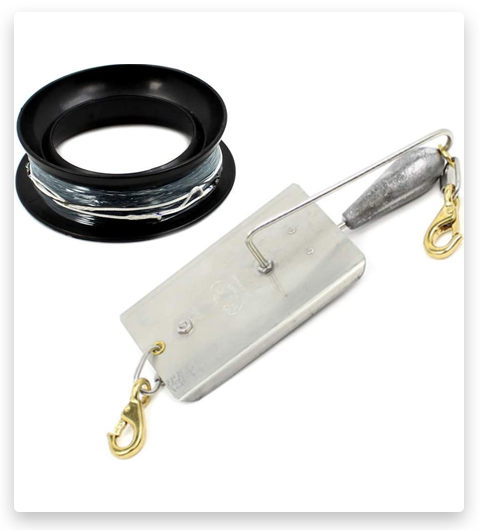
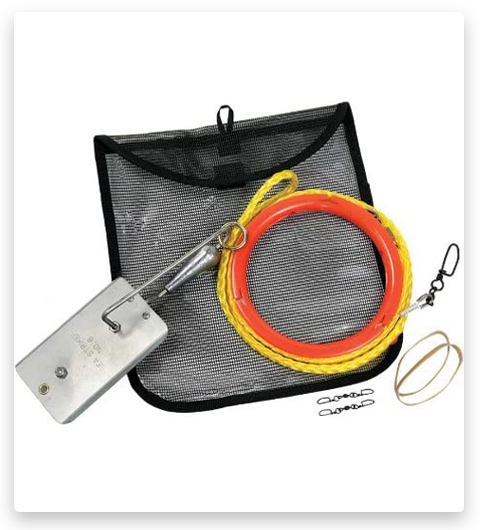
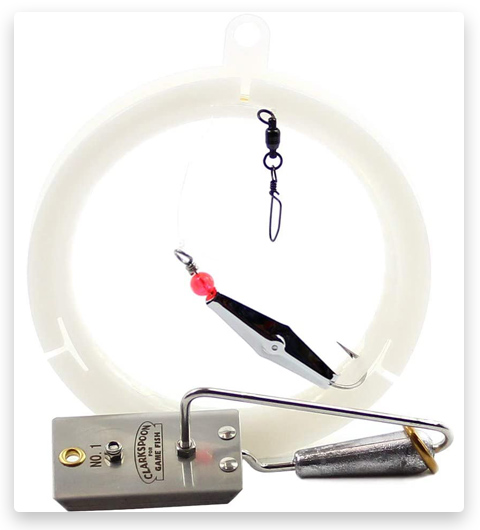
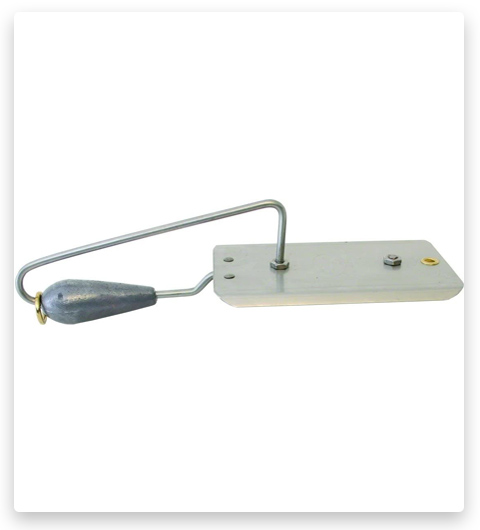
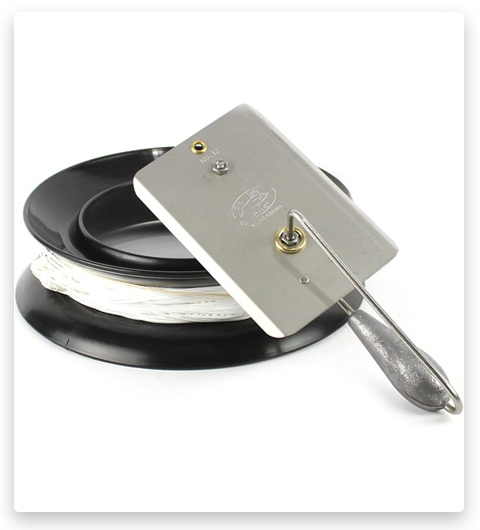
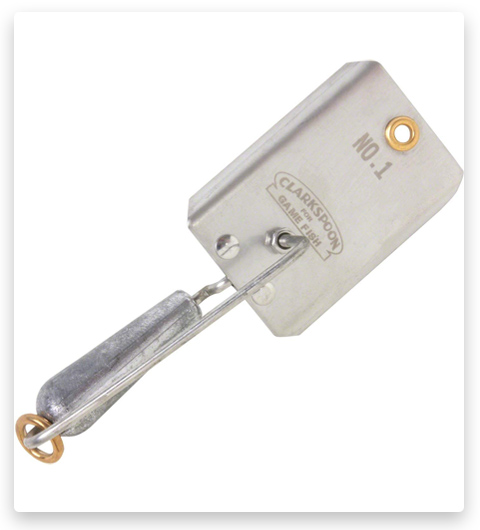
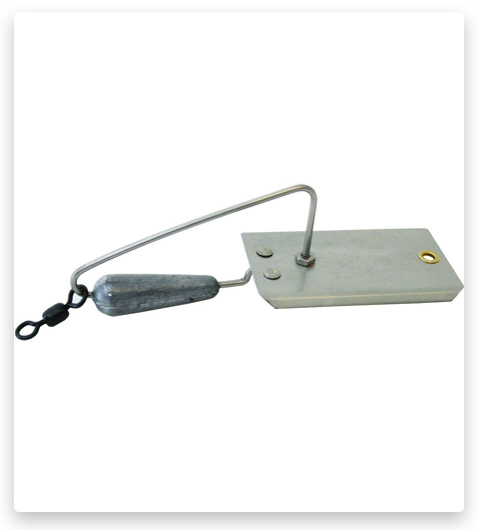
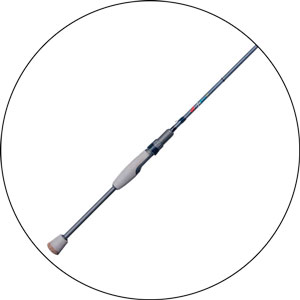
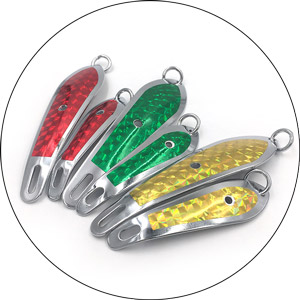
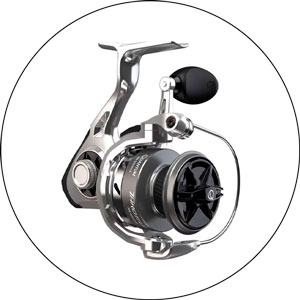


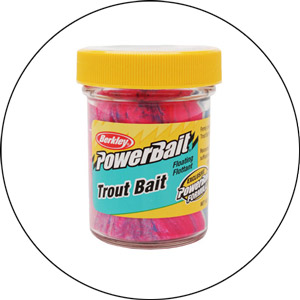
As an angler with over 20 years of experience, I can confidently say that this article is spot-on. The introduction of planer boards has indeed transformed the way I fish. They’re an absolute game-changer, especially when you’re out trolling on the big lake. The fact that they allow you to cover a larger area and present your baits at varying depths is a huge advantage. Can’t wait to read more about the mechanics of these devices!
Planer boards have definitely revolutionized my fishing experience. They’ve made it possible for me to fish multiple lines without worrying about tangling, which is a huge plus. This article does a great job explaining their benefits and I’m excited to read more about the practical tips for using them.
In my personal experience, I’ve found that tattle tale flags aren’t necessarily the most effective. If you’re keenly observing your boards, you can typically discern when something’s amiss or ‘fishy’, even without a flag.
Another technique I’ve found helpful is to turn on the clicker and adjust the drag to slip with the slightest pull. It’s remarkable how well this can work. Regardless, I’d still advise checking every line in the boat every 30-60 minutes just to be sure everything’s in order.
Trolling, in my opinion, shouldn’t be viewed as a leisurely activity, especially if you’re the one steering the boat.
When it comes to reeling in fish, I usually go for the inside boards first. The only exception would be if a fish hits and the outside board goes back a significant distance – in this case, I might try to drag it in over the inside board.
I’ve experienced instances where Lake Trout pulled the board down as if it were a bobber. In these situations, it’s not ideal to drag it in over the inside board.
The history of planer boards is quite interesting! I didn’t realize they’ve been around in simpler forms for centuries. It’s amazing to see how they’ve evolved to suit different fishing conditions and species. This article is a treasure trove of knowledge for both novice and experienced anglers.
It’s commonly agreed that when you’re operating multiple lines on either side of the boat, it’s a good strategy to have your outside lines higher in the water column and your inside lines deeper. This method decreases the likelihood of a fish from the outside interfering with your deeper, inside lines.
If you’re looking to redeploy your outside line without having to reel in your inside line, a handy technique is to drop the lure and board directly behind the boat, keep a straight course, and let your line free spool until your board is beyond the inside board. It might take some practice to get the hang of it, but it’s a real time-saver once you’ve mastered it.
Flags do have their advantages, especially when using spinners with crawlers. Fish like Perch and White bass are known for their short strikes which can really throw a wrench in your fishing plans. It’s also beneficial to keep your boards closer to the boat when trolling spinners, as this can help with gear management and save time. Generally, when I’m spinner fishing, I’m trolling at about 1 to 1.3 mph, so be prepared to grab the rod quickly and don’t rely too much on the clicker to signal strikes.
When pulling spinners as opposed to cranks, it’s even more crucial to keep a close eye on the boards. I’ve often found success in dropping the board back upon noticing a light strike and giving the fish a little more time to commit to the harness. I hope this information proves helpful, and I wish you all the best for a fun year on the water!
I have a deep respect for traditional fishing methods, but I also appreciate the advancements that help us enjoy our hobby more. Planer boards are one such innovation. They’ve not only increased my catch rate but also made my fishing trips more enjoyable. This article perfectly encapsulates the benefits of planer boards.
It’s generally advisable to have easy pulling, shorter leads, and deeper lines inside. On the other hand, hard pulling longer leads, and shallower lines should be positioned outside. In areas where there are weeds and small fish, tattle flags become a necessity. Any fish of reasonable size should pull your lines clear of the other boards unless you’re pulling them in really hard.
With enough practice, you’ll be able to reset even your middle boards without disturbing the others. The trick is to let them go straight out the back (in free-spool mode) until you have the correct amount of line out for spacing, and then let them swing back into the pattern.
Naturally, speed and bait type play significant roles in this whole process. After about 2-3 thousand hours of practice, you’ll likely be a pro at this.
As someone who just started getting into fishing, this article is incredibly informative. I’ve always wondered how experienced anglers manage to cover such large spans of water, and now I understand. The idea of using planer boards is ingenious! I’m eager to learn more about how to use them effectively.
Running downrigger cables with boards might not be the best idea unless you’re willing to risk the riggers being yanked off the boat. It’s important to have a system that provides “give” to absorb the surge from the boat and the waves impacting the boards. One simple way to achieve this is by replacing the cable with a heavy-duty weed wacker line. I’ve seen people use a 500 lb. spectra line, but they also include snubbers on the boards and a sophisticated shock cord/pulley system.
Also, I wouldn’t advise moving the attachment point on the boards lower. This can actually lift the board out of the water, reducing the planning surface, which is the opposite of what you want. It’s better for the boards to run low in the water. If the boards are made of wood, try letting them soak in the water. If that doesn’t work or if they’re made from a composite material, consider adding weight (wheel weights are a popular choice) to the lower sides of the boards.
Lastly, if your boards are flipping and diving, it’s possible that you’re letting them out too quickly. If you don’t allow them enough time to plane away from the boat, they can flip and dive.
I’ve been fishing since I was a kid, and it’s fascinating to see how technology has advanced over the years. Planer boards are such a simple concept, yet they’ve had a significant impact on my fishing experience. This article does an excellent job explaining their purpose and benefits. Looking forward to the next sections!
I recently purchased both the regular and large-size Parks Planers. On first inspection, they seem like superior boards with better foam and deeper aluminum sheet metal. I must admit, though, that I do have a preference for the corkscrew swivels on my Zakks boards. They’re much easier to manage in winter when your fingers are cold or when you’re wearing gloves.
Consequently, I decided to swap out the snap swivels on my Parks boards with pigtail swivels. The large Parks boards are indeed larger than my Zakks boards by about 2 inches in both height and width. They pull similarly, though the Zakks do pull slightly better, it wasn’t that noticeable on my first trip out with them. One major advantage of the large Parks boards is their visibility, thanks to the large piece of foam.
However, I think I’ll need to test them in various conditions to form a solid opinion. I’m a bit concerned that the large piece of foam might get tossed around by the wind. Because of this, I’ve gone ahead and ordered the regular-sized Parks boards as well. I plan to test all three sets side by side over the coming months.
Whenever we land a fish, we observe the board moving back. We then take the line and shift to the rear of the boat on the side opposite to where the rod was placed. It’s important to keep the rod tip elevated and directed away from the fish because as the fish ascends to the surface, it avoids your other lines.
As we reel in the board, it traces a path across behind the other boards. Once the board reaches the boat, we detach it from the line and proceed to reel in the fish. We’ve been using this method for about 15 years and haven’t lost aboard yet. We have tried alternate ways, but we’ve found our method to be the easiest.
Sure, we do occasionally experience a tangle, but it’s never anything that can’t be sorted out with a bit of patience. I’m fairly certain many other people employ this technique as well.